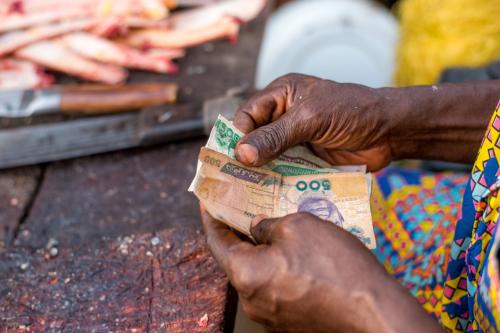Summary
Urban violence is a serious development constraint in developing countries and increasingly dominates the daily lives of citizens across the globe. The accompanying increase in fear and insecurity has led to a wide-scale preoccupation with the phenomenon, but there is little agreement on the underlying causes of such endemic violence or of its costs and consequences. Equally, the capacity of various sector-specific violence reduction interventions to address this pervasive problem is often questioned.
Recently there has been growing acknowledgment that urban residents themselves may be the key to a better understanding of such violence and to identifying appropriate interventions. Participatory urban appraisals offer a practical way for local people to articulate their perceptions of the complexity of everyday violence. Complementing existing knowledge, such assessments assist in developing a more holistic framework that positions violence in terms of three interrelated components; first, the social, economic, political, and institutional categories of violent manifestations; second, the underlying causal factors, not only structural factors but also individual identity and agency; and third, the costs of violence in terms of its impacts on the assets of poor households.
This provides the necessary context for framing an integrated policy, one that reconciles the bottom-up views of local people with the top-down solutions off ered by professionals. A useful matrix distinguishes among seven predominant prevention or reduction policies, ranging from well-known interventions such as criminal justice and public health, through conflict transformation and human rights—more commonly associated with confl ict reduction—to newer more innovative urban solutions such as citizen security, crime prevention through environmental design (CPTED), and the community-driven social capital approach. As governments, the private sector, and civil society alike increasingly prioritize violence reduction, they need to take up the challenge to provide more innovative cross-sector solutions that better address the complexity of the endemic violence, fear, and insecurity that permeates the everyday lives of local populations.
This brief is informed by the findings from participatory urban appraisals of violence undertaken by the author in 1999 in eighteen poor urban communities in Colombia and Guatemala. These provide perception data from an extensive number of local women and men, girls and boys, whose daily lives are influenced by violence, insecurity, and fear. While participatory methodologies are now recognized as an important way of bringing the ‘voices of the poor’ to policymakers, to date they have focused on the problem of poverty. Thus this study pioneers a new violence-focused research methodology—first as a pilot project by the author in an earlier study of urban violence in Jamaica.
The Brookings Institution is committed to quality, independence, and impact.
We are supported by a diverse array of funders. In line with our values and policies, each Brookings publication represents the sole views of its author(s).


